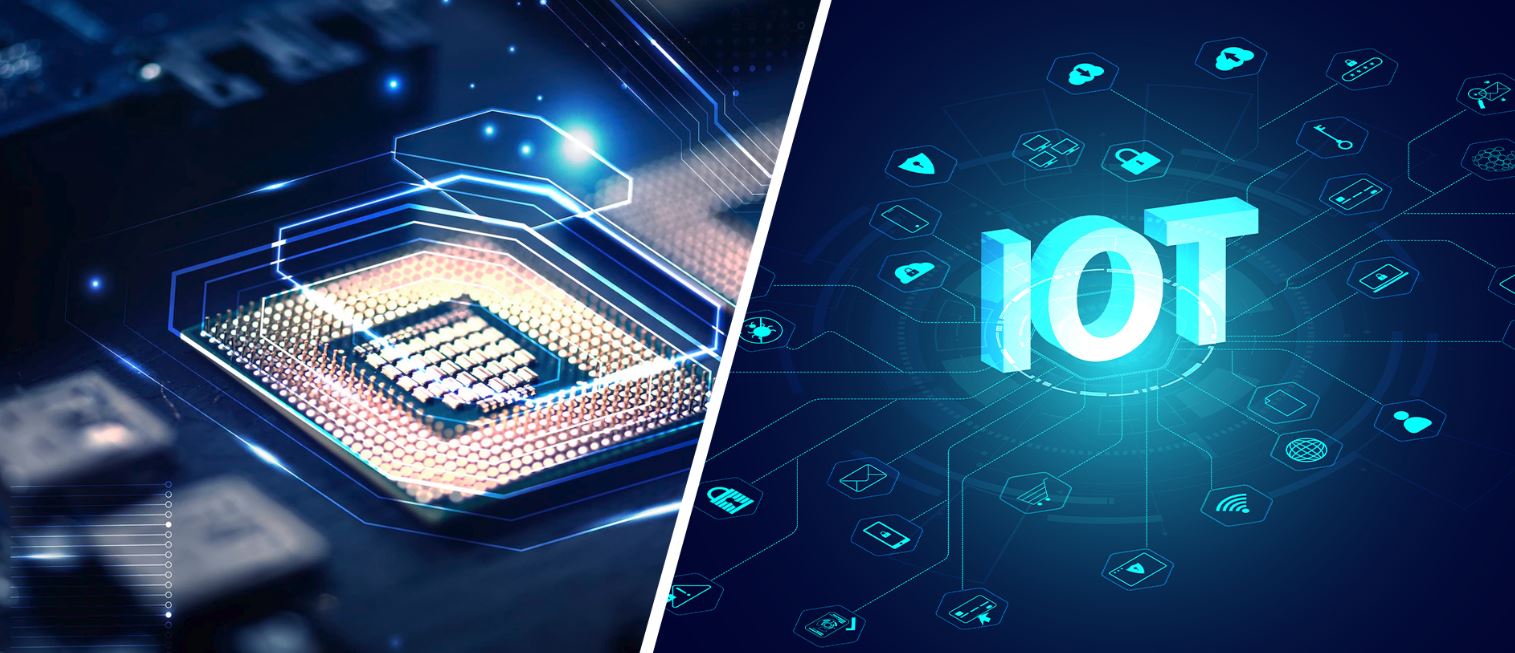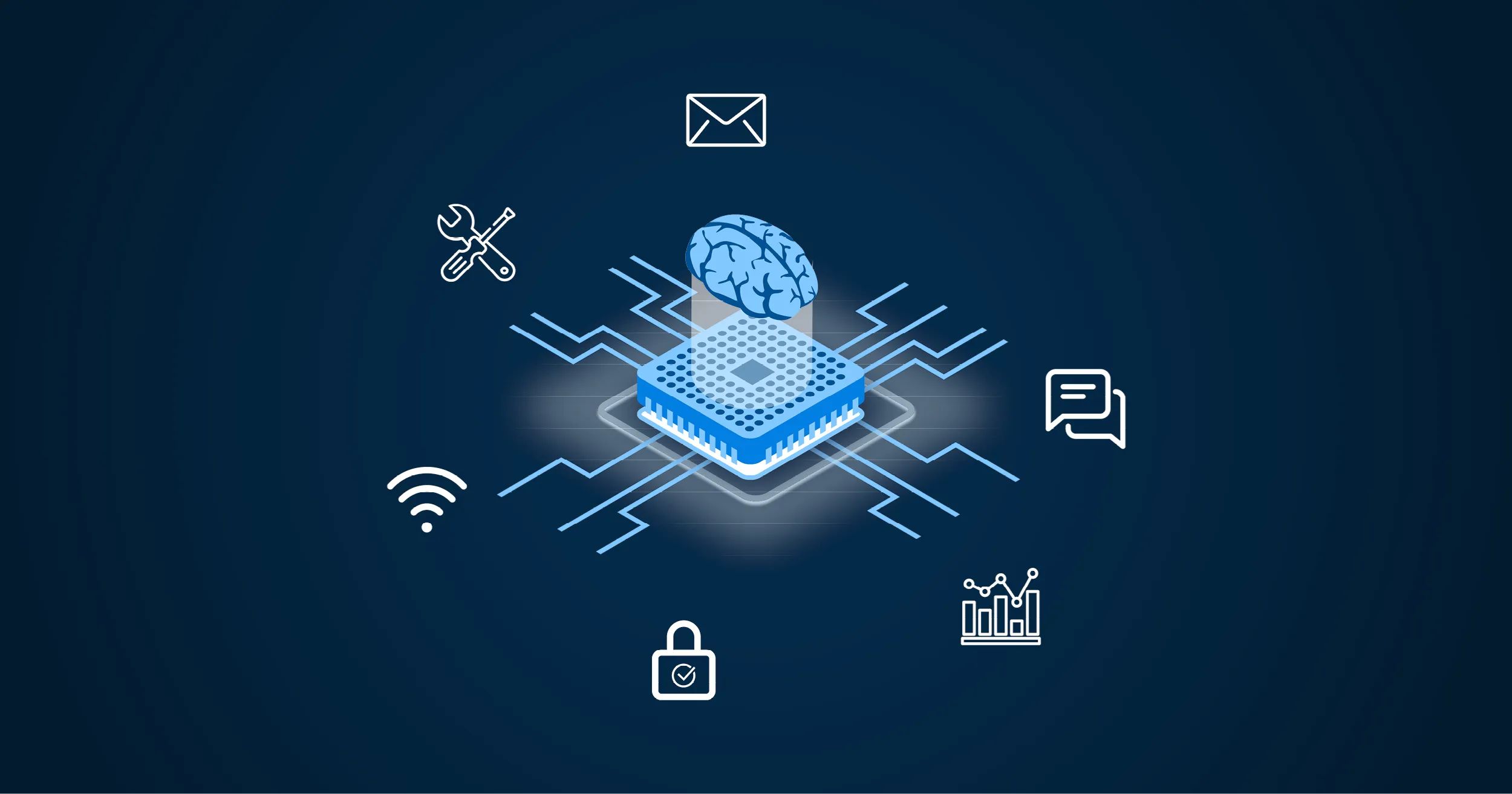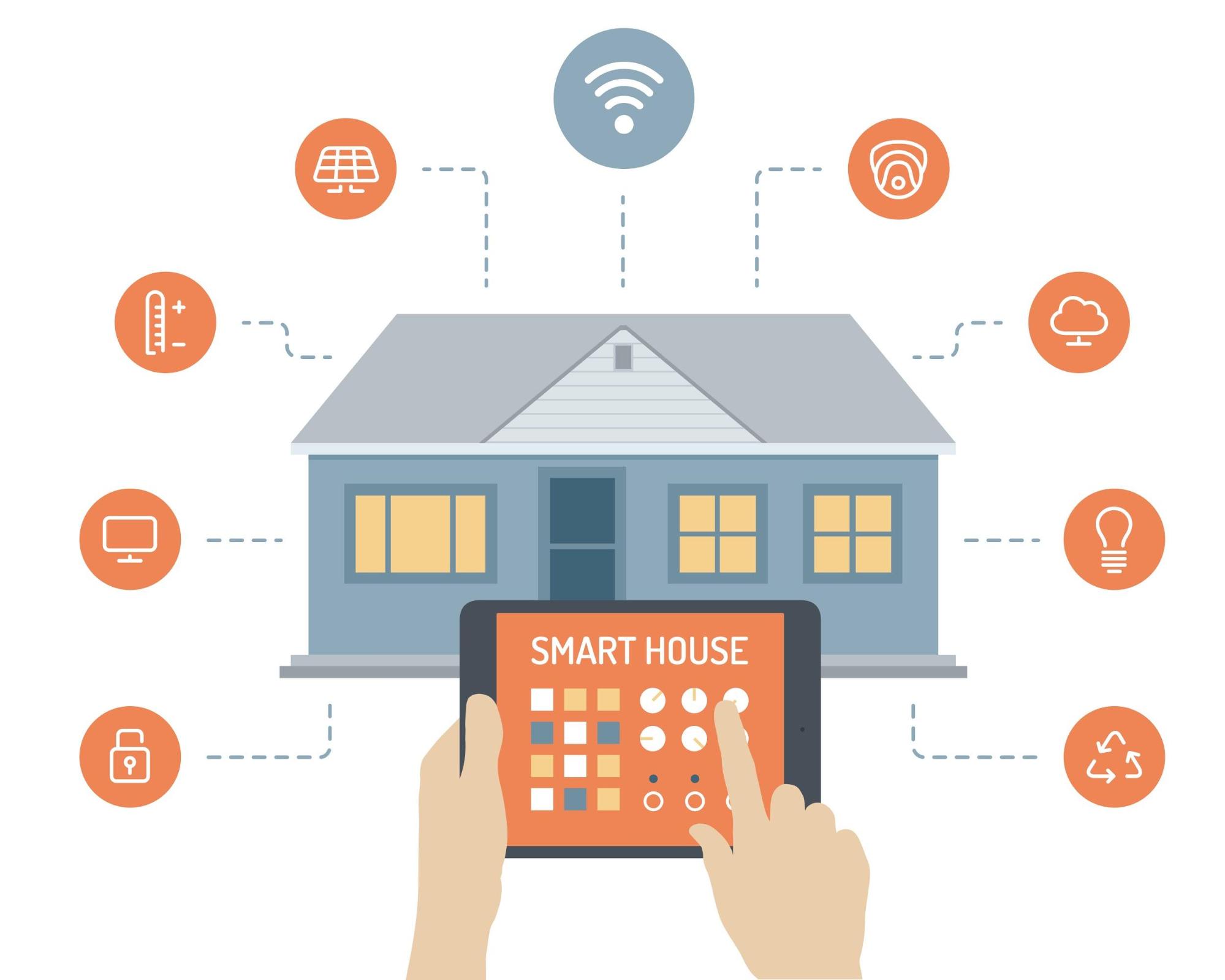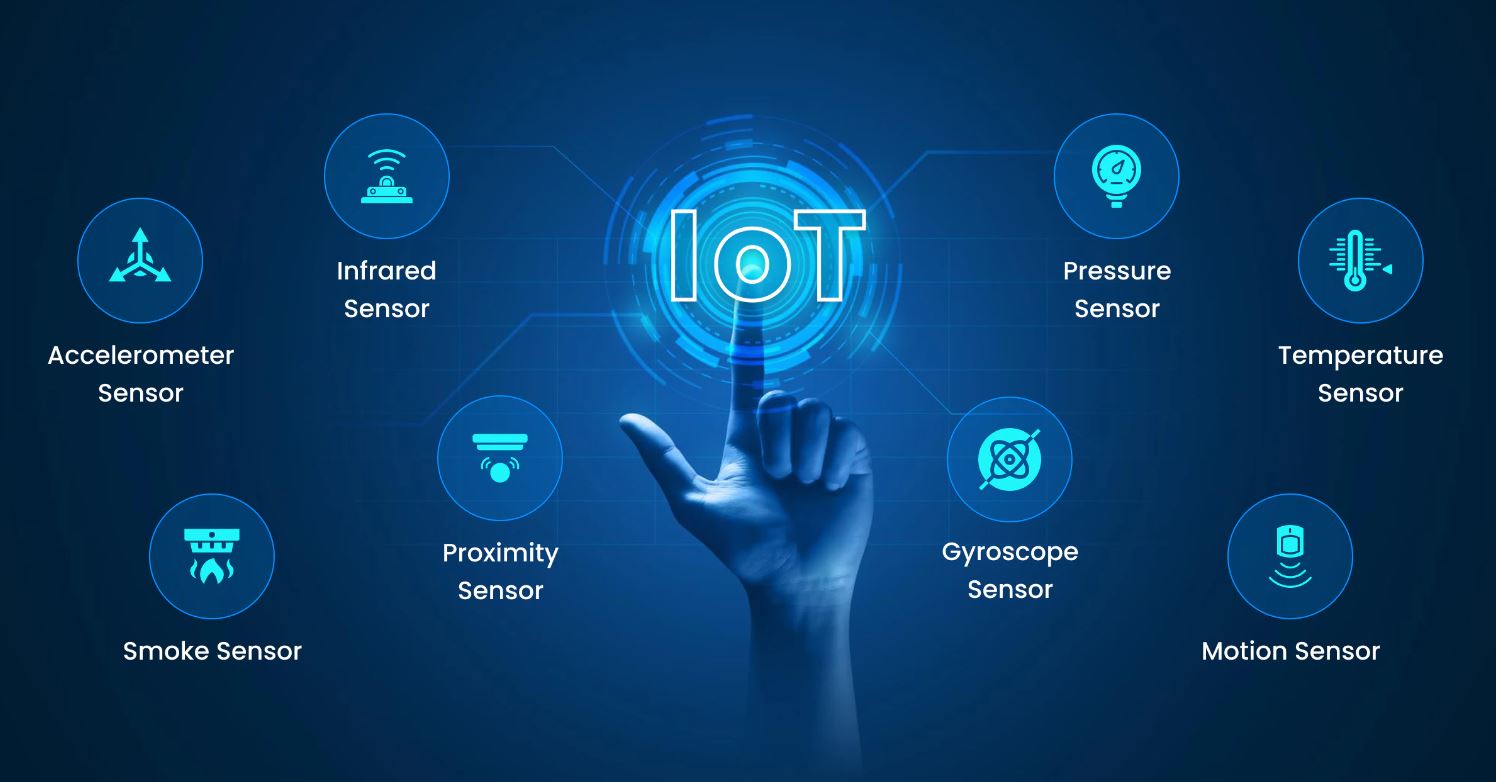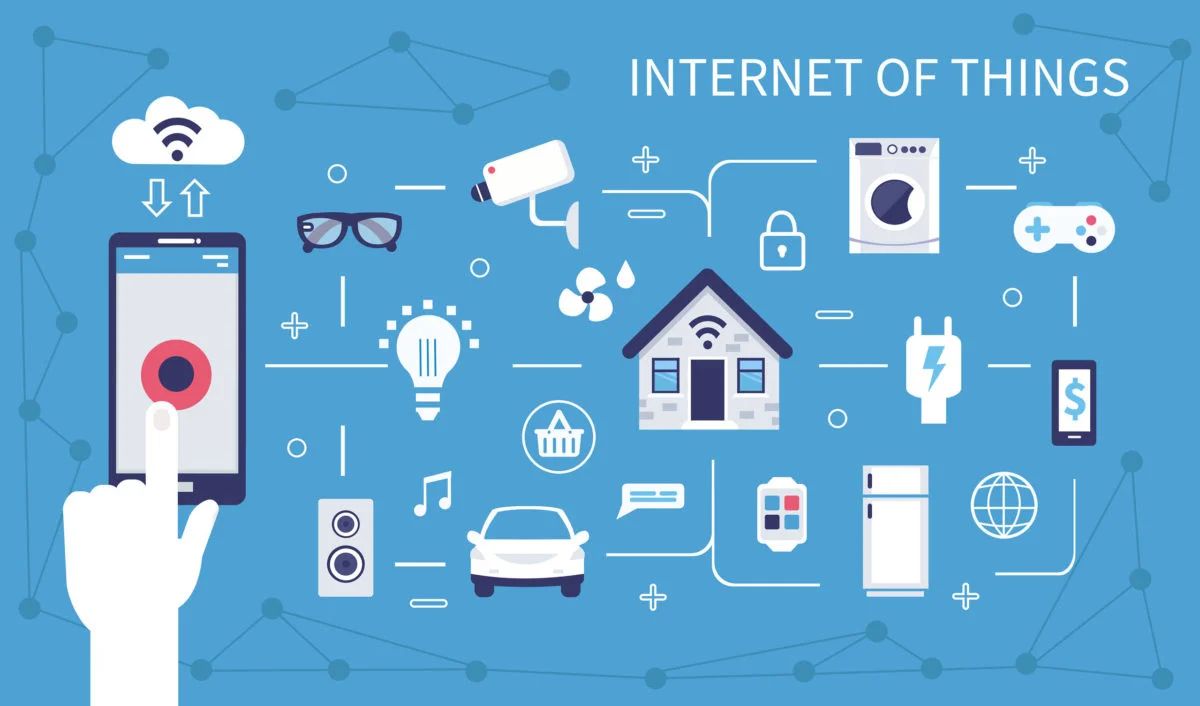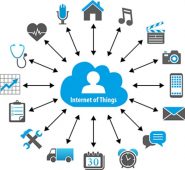Introduction
Welcome to the exciting world of embedded systems in the Internet of Things (IoT)!
The IoT has revolutionized the way we interact with the world around us. From smart homes to connected cars, IoT technology has infiltrated every aspect of our lives. At the heart of this revolution lies embedded systems, which play a crucial role in enabling the seamless integration of physical devices with the virtual world.
Embedded systems are at the core of IoT devices, providing the intelligence and functionality that make them smart and connected. But what exactly are embedded systems, and how do they fit into the larger IoT ecosystem?
Embedded systems can be defined as specialized computer systems designed to perform specific functions within a larger system. Unlike general-purpose computers, which are designed to handle a wide range of tasks, embedded systems are tailored to perform dedicated functions efficiently and reliably.
These systems typically consist of a combination of hardware and software components, carefully integrated to work together seamlessly. The hardware components include microcontrollers or microprocessors, memory units, input/output peripherals, and interfaces, while the software components encompass the operating system, device drivers, and application software.
Embedded systems in IoT devices serve as the interface between the physical and digital worlds. They collect data from sensors, process it, and make intelligent decisions based on predefined algorithms. This allows them to respond to specific events or trigger actions that have a real-world impact.
As the IoT continues to evolve and expand, embedded systems are becoming increasingly vital. They enable devices to communicate with each other, exchange data, and make autonomous decisions. This connectivity not only enhances the functionality of individual devices but also facilitates seamless integration and interoperability between different IoT components and systems.
Embedded systems in IoT devices possess unique characteristics that make them ideally suited for the challenges of this interconnected environment. These characteristics include real-time processing capabilities, power efficiency, small form factor, and robustness to handle harsh environmental conditions.
In the following sections, we will explore the key components of embedded systems, their role in the IoT landscape, and some examples that highlight their diverse applications. We will also discuss the challenges faced in developing embedded systems for IoT devices and how they can be overcome.
Definition of Embedded System
Embedded systems are specialized computer systems designed to perform specific functions within a larger system. They are tightly integrated into a host device or product and are responsible for controlling its operation and providing the desired functionality. Unlike general-purpose computers, which are designed to handle a wide range of tasks, embedded systems are tailored to perform dedicated functions efficiently and reliably.
Embedded systems consist of a combination of hardware and software components carefully designed to work together. The hardware components typically include microcontrollers or microprocessors, memory units, input/output peripherals, and interfaces. These components are chosen based on the specific requirements of the system, such as processing power, memory capacity, and communication capabilities.
The software components of embedded systems include the operating system, device drivers, and application software. The operating system, often a real-time operating system (RTOS), provides an interface between the hardware and software layers of the system and manages the execution of tasks and processes. Device drivers facilitate the interaction between the hardware components and the software, enabling smooth communication and data transfer. The application software is responsible for implementing the desired functionality and executing specific tasks based on predefined algorithms and logic.
One of the key characteristics of embedded systems is their ability to operate in real-time. Real-time systems must respond to events within strict time constraints, ensuring that critical tasks are executed in a timely manner. This is particularly important in applications where prompt response is required, such as industrial automation, automotive systems, and medical devices.
Embedded systems are also designed to be power-efficient, as they often operate on limited power sources such as batteries or small energy harvesting devices. Power optimization techniques, such as low-power states, sleep modes, and efficient power management algorithms, are implemented to maximize the system’s battery life and reduce energy consumption.
Another important aspect of embedded systems is their small form factor. They are designed to be compact, lightweight, and integrated into the host device seamlessly. This allows them to be embedded within various products and systems without occupying much space, making them ideal for applications with size restrictions or mobility requirements.
Lastly, embedded systems are built to withstand harsh environmental conditions. They are engineered to be rugged, resilient, and able to operate reliably in extreme temperatures, vibrations, humidity, and other challenging environments. This durability ensures the longevity and robustness of the embedded system, making it suitable for applications where reliability is crucial, such as aerospace, defense, and outdoor monitoring systems.
In the next section, we will explore the key components that make up an embedded system and how they work together to perform specific functions.
Key Components of an Embedded System
Embedded systems are composed of several key components that work together to enable their functionality. These components include:
- Microcontrollers or microprocessors: These are the central processing units (CPUs) of embedded systems. They are responsible for executing instructions, performing calculations, and controlling the overall operation of the system. Microcontrollers are often preferred in embedded systems as they integrate the CPU, memory, and input/output peripherals into a single chip, making them cost-effective and compact.
- Memory units: Embedded systems require both volatile (RAM) and non-volatile (ROM) memory. RAM is used to store data and program instructions temporarily during system operation, while ROM contains permanent data and instructions that are essential for the system to boot up and operate smoothly. Flash memory, a type of electrically erasable programmable read-only memory (EEPROM), is commonly used for non-volatile storage in embedded systems.
- Input/output (I/O) peripherals: These include various devices that facilitate communication between the embedded system and the external world. Common examples of I/O peripherals in embedded systems include sensors (to capture data from the environment), actuators (to control physical processes), displays (to present information to the user), and communication interfaces (such as Ethernet, Wi-Fi, or Bluetooth) for connecting to other devices or networks.
- Interfaces: Interfaces in embedded systems provide a means for connecting different components and subsystems. They define the protocols, signals, and electrical specifications required for effective communication between these components. Examples of interfaces used in embedded systems include Universal Serial Bus (USB), Serial Peripheral Interface (SPI), Inter-Integrated Circuit (I2C), and Ethernet.
- Operating system (OS): The operating system is responsible for managing the resources and execution of tasks within the embedded system. It provides the necessary runtime environment for running applications and controlling the interaction between software and hardware components. Real-time operating systems (RTOS) are commonly used in embedded systems as they offer deterministic response times and efficient task scheduling, critical for time-sensitive applications.
- Device drivers: Device drivers act as intermediaries between the operating system and the hardware components. They provide the software interface that allows the operating system and higher-level software to communicate and control the hardware. Device drivers encapsulate the low-level operations required to interact with specific peripherals, ensuring compatibility and smooth operation.
- Application software: The application software in an embedded system implements the specific functionality of the device. It defines how the system interacts with the user or the external environment. Application software can range from simple control algorithms to complex software packages that incorporate machine learning, data processing, and networking capabilities.
These components work together cohesively to enable the embedded system to perform its dedicated functions. The microcontroller or microprocessor acts as the brain, executing instructions and controlling the operation of the system. The memory units store both volatile and non-volatile data, allowing for efficient data management. The I/O peripherals facilitate communication with the external world, while interfaces enable connectivity between different components. The operating system and device drivers provide the software layer, enabling efficient execution of tasks and interaction with hardware. Lastly, the application software implements the specific functionality of the embedded system, tailored to the requirements of the intended application.
In the next section, we will explore the role of embedded systems in the Internet of Things (IoT) and how they contribute to the interconnected world of smart devices.
Role of Embedded Systems in IoT
Embedded systems play a crucial role in the success and functionality of the Internet of Things (IoT). They are the backbone of IoT devices, enabling them to connect, communicate, and perform intelligent actions. The integration of embedded systems in IoT opens up a world of possibilities, transforming everyday objects into smart devices with advanced functionality.
One of the main roles of embedded systems in IoT is to collect data from various sensors and input devices. They continuously monitor the environment, capturing information such as temperature, humidity, motion, light, and more. This data is then processed and analyzed in real-time by the embedded system, enabling the device to make intelligent decisions based on the gathered information.
Embedded systems also act as the control center of IoT devices, executing specific actions based on predefined algorithms and logic. For example, in a smart home system, the embedded system may receive data from motion sensors and adjust the temperature setting accordingly or activate security measures in response to suspicious activities.
The integration of embedded systems in IoT devices facilitates seamless communication and connectivity. They enable devices to exchange data with each other, forming complex networks that allow for increased automation and coordination. Embedded systems utilize communication protocols such as Wi-Fi, Bluetooth, Zigbee, or cellular networks to establish connections and interact with other IoT devices, cloud platforms, or user interfaces.
Embedded systems also play a vital role in enhancing the energy efficiency of IoT devices. They implement power-saving algorithms and techniques to optimize energy consumption and prolong battery life. For example, an embedded system in a smart lighting system can adjust the brightness or turn off lights when no one is present, thereby conserving energy.
Moreover, embedded systems in IoT devices enable remote monitoring and control. They allow users to access and manage their devices from anywhere using smartphones, tablets, or computers. This remote accessibility provides convenience and enables real-time monitoring, control, and data analysis, enhancing the overall user experience.
The integration of embedded systems in IoT devices has opened up countless possibilities for enhancing various sectors such as healthcare, transportation, agriculture, industrial automation, and more. In healthcare, embedded systems enable remote patient monitoring, medication adherence tracking, and personalized healthcare services. In transportation, embedded systems power smart navigation systems, vehicle-to-vehicle communication, and autonomous driving features. In agriculture, embedded systems assist in precision farming, enabling efficient water usage, pest control, and crop yield optimization.
The role of embedded systems in IoT is evolving rapidly, and as technology advances, we can expect to see even more innovative applications and use cases. The seamless integration of physical devices with embedded systems, connectivity, and intelligent functionalities paves the way for a smarter and more interconnected world.
In the next section, we will discuss some of the key characteristics of embedded systems in IoT that make them well-suited for the challenges of this interconnected environment.
Characteristics of Embedded Systems in IoT
Embedded systems in IoT devices possess distinct characteristics that make them well-suited for the challenges of the interconnected environment. These characteristics enable them to handle the diverse requirements of IoT applications, ensuring seamless integration, efficient communication, and intelligent decision-making. Some of the key characteristics of embedded systems in IoT include:
- Real-time processing: Embedded systems in IoT devices often require real-time processing capabilities to respond promptly to events or changes in the environment. Real-time processing ensures that critical tasks are executed within strict time constraints, enabling timely and accurate decision-making. This characteristic is vital in applications such as industrial automation, healthcare monitoring, and autonomous vehicles.
- Power efficiency: IoT devices are often constrained by limited power sources, such as batteries or energy harvesting technologies. Embedded systems in IoT devices are designed to be power-efficient, optimizing energy consumption and maximizing battery life. Power-saving techniques such as sleep modes, dynamic frequency scaling, and efficient power management algorithms are implemented to ensure energy-efficient operation, enabling devices to operate for extended periods without frequent charging or battery replacements.
- Small form factor: Embedded systems in IoT devices are typically compact and designed to have a small form factor. This enables them to be seamlessly integrated into various devices, ensuring minimal space requirements. The small form factor is particularly important in wearable devices, smart home appliances, and other applications where size is a critical factor.
- Robustness: IoT devices can be exposed to harsh environmental conditions such as extreme temperatures, humidity, vibrations, or physical impacts. Embedded systems in IoT devices are designed to be robust, capable of withstanding these challenging conditions. Robustness ensures the reliable operation of the devices, even in demanding environments such as industrial settings or outdoor applications.
- Interoperability: Embedded systems in IoT devices are designed to enable seamless connectivity and interoperability. They incorporate various communication protocols and standards to ensure compatibility with other devices and systems. This characteristic allows IoT devices to exchange data and collaborate with each other, facilitating the creation of interconnected ecosystems and enabling cross-platform integration.
- Security: Security is a critical aspect of IoT devices, as they often handle sensitive data and operate within interconnected networks. Embedded systems in IoT devices employ various security measures to protect data and ensure secure communication. This may include encryption, authentication mechanisms, secure firmware updates, and secure boot processes, among others. Robust security measures are essential to safeguard the privacy and integrity of the data transmitted and stored within IoT devices.
These characteristics enable embedded systems in IoT devices to meet the unique challenges of the interconnected world. Real-time processing capabilities ensure timely responses and decision-making, power efficiency enables long battery life, small form factor allows for seamless integration, robustness ensures reliable operation in harsh environments, interoperability facilitates seamless connectivity, and security measures protect against potential threats and vulnerabilities.
By possessing these characteristics, embedded systems in IoT devices empower the creation of smart, connected devices that can seamlessly interact with each other and the external world. They are the driving force behind the intelligence, functionality, and connectivity of IoT applications in various domains.
In the next section, we will explore some examples of embedded systems in IoT to better understand their diverse applications and implications.
Examples of Embedded Systems in IoT
Embedded systems play a key role in the implementation of IoT solutions across a wide range of industries and applications. Let’s explore some examples of how embedded systems are used in IoT:
- Smart Home Automation: Embedded systems are at the heart of smart home automation systems. They control and monitor various devices such as lighting, thermostats, security cameras, and home appliances. Embedded systems collect data from sensors, process it, and make decisions to optimize energy usage, enhance security, and enable seamless control and monitoring of the smart home.
- Industrial Automation: Embedded systems in IoT enable intelligent automation in industrial settings. They connect machines, devices, and systems to gather real-time data and insights for efficient operation, predictive maintenance, and optimization of production processes. Embedded systems monitor machine health, analyze performance metrics, and trigger automated actions to enhance productivity, reduce downtime, and minimize errors.
- Healthcare Monitoring: Embedded systems in IoT devices revolutionize healthcare monitoring. They enable the collection and analysis of patient data in real-time, whether it’s through wearable devices, smart medical devices, or remote monitoring systems. Embedded systems track vital signs, measure activity levels, and transmit data to healthcare professionals for continuous monitoring, early detection of health issues, and personalized healthcare management.
- Smart Agriculture: Embedded systems make agriculture more efficient and sustainable. They enable precision farming techniques by collecting data on soil moisture levels, temperature, humidity, and other factors. This data is analyzed to optimize irrigation, automate pest control, and regulate the use of fertilizers. Embedded systems also enable remote monitoring of crops and livestock, ensuring their well-being and maximizing yield.
- Connected Vehicles: Embedded systems in IoT enable smart and connected vehicles. They control and monitor various aspects of the vehicle’s operation, including engine performance, navigation, entertainment, and safety features. Embedded systems collect data from various sensors, enabling vehicle-to-vehicle (V2V) communication, real-time traffic updates, and autonomous driving capabilities. They provide a seamless and connected user experience while improving safety and efficiency on the road.
- Smart Energy Management: Embedded systems in IoT devices track and manage energy consumption in residential, commercial, and industrial settings. They intelligently monitor power usage, provide real-time energy insights, and dynamically adjust energy consumption based on demand and availability. Embedded systems enable energy optimization, load balancing, and integration of renewable energy sources, contributing to a more sustainable and efficient energy ecosystem.
- Public Infrastructure Monitoring: Embedded systems in IoT devices play a critical role in monitoring and managing public infrastructure. They track and analyze data from sensors embedded in bridges, roads, buildings, and other structures to detect and assess potential issues. Embedded systems enable real-time monitoring of structural integrity, vibration levels, and environmental conditions. This information helps in preventive maintenance, ensuring the safety and reliability of public infrastructure.
These examples illustrate the versatility and impact of embedded systems in IoT across various domains. Embedded systems enable intelligent automation, real-time monitoring, data analysis, and decision-making in diverse applications, bringing digital connectivity and enhanced functionality to everyday objects.
In the next section, we will discuss the challenges faced in the development of embedded systems for IoT devices and how these challenges can be addressed.
Challenges in Embedded Systems for IoT
The development and implementation of embedded systems in IoT devices come with various challenges. These challenges need to be addressed to ensure the seamless integration, reliability, and efficiency of these systems. Some of the key challenges in developing embedded systems for IoT include:
- Resource Constraints: Embedded systems in IoT devices often operate with limited resources such as memory, processing power, and energy. Developers need to optimize resource usage, efficiently manage memory, and implement power-saving techniques to ensure optimal performance within resource-constrained environments.
- Interoperability: Interoperability is crucial in the interconnected world of IoT. Embedded systems must be able to communicate and interact effectively with other devices, platforms, and protocols. Developers need to address interoperability challenges by implementing standardized communication protocols, ensuring compatibility, and embracing open standards to enable seamless connectivity and data exchange.
- Security and Privacy: Security is a major concern in IoT, as embedded systems often handle sensitive data and operate within interconnected networks. Developers need to implement robust security measures to protect against unauthorized access, data breaches, and privacy violations. This includes encryption, authentication mechanisms, secure firmware updates, and regular vulnerability assessments to ensure the integrity and confidentiality of data.
- Real-time Processing: Many IoT applications require real-time processing capabilities, where embedded systems must respond to events within strict time constraints. Developers need to design embedded systems with efficient real-time scheduling algorithms, task prioritization, and event-driven architectures to ensure timely and accurate processing of critical tasks and events.
- Scalability and Flexibility: IoT environments are often characterized by a large number of interconnected devices and rapidly changing requirements. Embedded systems need to be scalable and flexible, capable of accommodating growth and adapting to evolving needs. Developers should design systems that can handle increased data volume, support firmware updates, and integrate new features seamlessly without compromising performance or usability.
- Reliability and Fault Tolerance: Embedded systems in critical IoT applications such as healthcare, transportation, or industrial automation need to be highly reliable and fault-tolerant. Developers need to implement mechanisms for error detection, recovery, and fault tolerance to ensure continuous operation, minimize downtime, and prevent system failures that could have potentially serious consequences.
- Testing and Validation: Testing embedded systems in IoT devices can be challenging due to the complexity and interconnected nature of these systems. Developers need to design comprehensive testing strategies that cover functional testing, performance testing, security testing, and interoperability testing. Rigorous testing and validation processes are crucial to ensure the resilience and reliability of embedded systems in real-world IoT environments.
Addressing these challenges requires a combination of technical expertise, careful design considerations, and adherence to industry best practices. Collaboration among hardware and software engineers, system architects, and domain experts is vital to overcome these challenges and ensure the successful development and implementation of embedded systems in IoT devices.
In the final section, we will conclude our exploration of embedded systems in IoT and highlight their significance in shaping our increasingly interconnected world.
Conclusion
Embedded systems are the driving force behind the advancements in the Internet of Things (IoT), enabling the seamless integration of physical devices with the digital world. They play a crucial role in IoT applications across various domains, ranging from smart homes and industrial automation to healthcare monitoring and agriculture.
Embedded systems in IoT devices are designed to perform specific functions efficiently and reliably. They consist of a combination of hardware and software components that work together seamlessly to collect data, process information, and make intelligent decisions. These systems possess unique characteristics such as real-time processing, power efficiency, small form factor, and robustness to withstand harsh environmental conditions.
Despite the numerous benefits they offer, developing embedded systems for IoT devices also comes with its set of challenges. Resource constraints, interoperability, security, real-time processing, scalability, reliability, and testing are some of the key challenges that must be addressed to ensure successful implementation and operation of these systems in IoT environments.
Through overcoming these challenges, embedded systems in IoT devices have the potential to revolutionize the way we interact with the world around us. They enhance the functionality of everyday objects, enable seamless connectivity, and facilitate intelligent decision-making. With embedded systems, devices can communicate, exchange data, and coordinate actions to create a more efficient, convenient, and sustainable environment.
As technology continues to advance, embedded systems in IoT will become more sophisticated and versatile. They will propel us towards a future where smart and interconnected devices seamlessly integrate into our lives, making our homes smarter, our industries more efficient, our healthcare systems more personalized, and our cities more sustainable.
In conclusion, we have explored the definition, key components, role, characteristics, examples, and challenges of embedded systems in IoT. With their intelligence, connectivity, and functionality, embedded systems are shaping the future of technology and paving the way for a more connected and advanced world.







